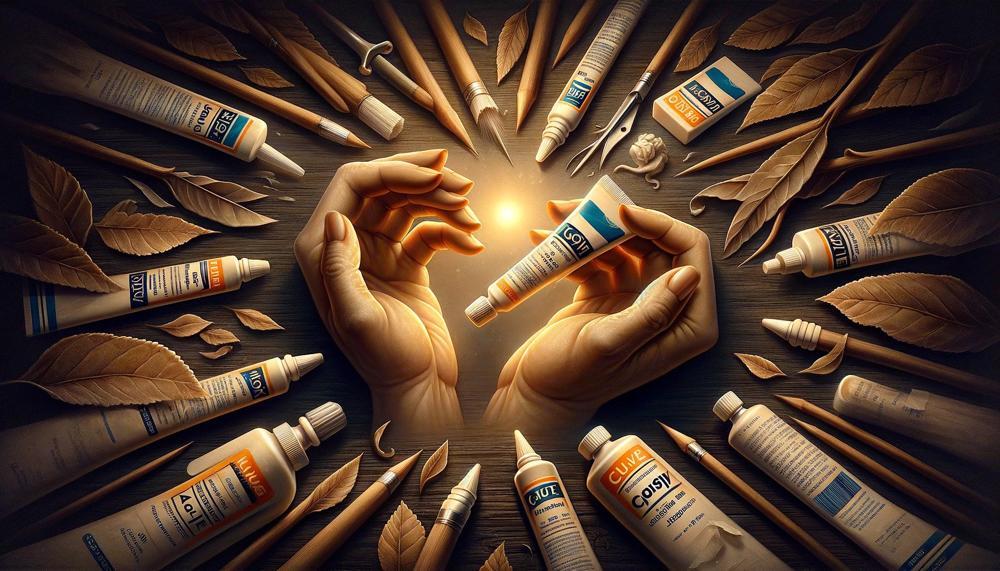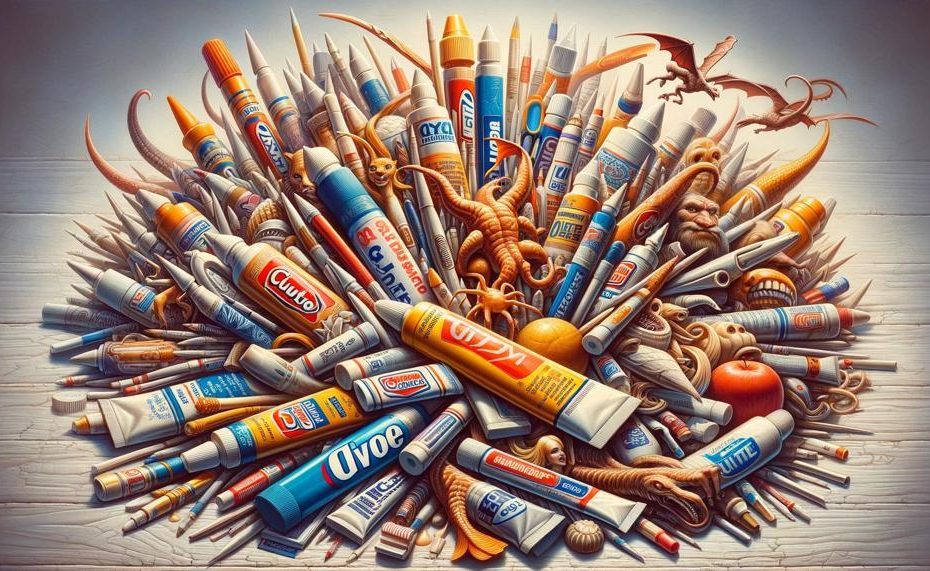While they may seem like a simple and unassuming object, glue sticks have a complex composition that makes them incredibly versatile and reliable.
They have come a long way from traditional liquid glues and are now used in various industries, proving their worth in holding things together – quite literally.
In this post, we will take a closer look at the ingredients that make up a glue stick and how they work together to create a powerful adhesive. Prepare to unravel the science behind these commonly used products and gain a deeper understanding of their capabilities.
So, what are glue sticks made of?
Hot glue sticks are made from thermoplastic elastomers, such as:
- Ethylene vinyl acetate (EVA)
- Amorphous poly alpha olefin (APAO)
- Polyamides (PA)
Modifiers are used with these ingredients to produce the appropriate product for the job. Tackifiers are also included in glue sticks. The polymers used to produce glue sticks affect its strength, flexibility, and resistance to heat. Polyethylene and EVA copolymers are two instances of polymers. Compared to EVA glue sticks for general purpose use, acrylic glue sticks are more flexible and stronger.
Whether you’re an avid crafter or simply curious about everyday objects, join us as we explore the fascinating world of glue stick composition and uncover why they truly are sticky wonders.
Table of Contents
The Advantages Of Glue Sticks
When it comes to adhesives, glue sticks have a plethora of advantages over other types, making them a popular choice for various applications.
Read on to discover the main benefits of using glue sticks compared to other adhesives.
Effortless application:
| Glue Sticks | Other Adhesives |
|---|---|
| Glue sticks are incredibly easy to use and require no mixing or curing time. | Other adhesives may involve mixing or curing time, making them more complex to use. |
Quick bonding:
| Glue Sticks | Other Adhesives |
|---|---|
| Glue sticks offer rapid bonding times, making them ideal for time-sensitive applications. | Other adhesives may take longer to dry, which can be inconvenient when time is of the essence. |
Versatile:
| Glue Sticks | Other Adhesives |
|---|---|
| Glue sticks can bond a wide range of materials, including wood, fabric, paper, and more. | Other adhesives may have limitations on what materials they can effectively bond together. |
Safe and non-toxic:
| Glue Sticks | Other Adhesives |
|---|---|
| With lower levels of volatile organic compounds (VOCs), glue sticks are safer for both the environment and your health. | Other adhesives may contain higher levels of VOCs, which can be harmful to the environment and your health. |
Clean and residue-free:
| Glue Sticks | Other Adhesives |
|---|---|
| Glue sticks provide a clean bond without leaving any sticky residue behind. | Other adhesives may leave behind a sticky residue, making cleanup more difficult. |
Portable:
| Glue Sticks | Other Adhesives |
|---|---|
| Glue sticks come in various sizes and forms, making them convenient to carry and use on-the-go. | Other adhesives may be bulky or require additional tools for application, making them less portable. |
How Are Hot Glue Sticks Made?
Step 1: Gathering Materials
To create hot glue sticks, you will need to gather the following materials: hot glue, a glue gun, wax paper, and a cutting tool.
Step 2: Preparing Your Work Surface
Lay down a sheet of wax paper on a flat surface to prevent the hot glue from sticking.
Step 3: Heating Up Your Glue Gun
Connect your glue gun to a power source and turn it on. Allow the gun to heat up for several minutes until the glue is fully melted.
Step 4: Applying Glue Onto Wax Paper

Once the glue is melted, use your glue gun to apply it in thin strips onto the wax paper, leaving enough space between each strip.
Step 5: Cooling and Hardening
Allow the glue to cool and harden completely before using a cutting tool to cut it into your desired sizes. If your desired size is not achieved, you can simply melt down the glue again and re-cut as needed.
Step 6: Storing in an Airtight Container
To prevent drying out, store your hot glue sticks in an airtight container until ready to use.
Are Glue Sticks Toxic?
Glue sticks, also known as solid adhesives, are a popular choice for crafting and school projects.
They consist of a combination of PVA (polyvinyl acetate), water, and other chemical substances that are generally considered non-toxic. Unlike other types of glue, glue sticks do not release harmful fumes or contain any acidic components, making them safe to handle and breathe in.
While they are generally safe for most uses, it is best to keep them out of reach from pets and avoid ingestion.
Conclusion
In conclusion, glue sticks may appear to be a mundane object, but their complex composition makes them an essential tool in various industries. From their transformation from liquid glue to solid form, these sticky wonders have proven their reliability in holding things together.
We have delved into the intricate components that make up glue sticks and how they work harmoniously to create a powerful adhesive. Furthermore, we have debunked common misconceptions about their composition and explored the different types available on the market.
Glue sticks offer numerous advantages over other adhesives, including effortless application, quick bonding, versatility, safety, cleanliness, and portability. Their convenience and effectiveness make them a go-to choice for many tasks. Additionally, we have provided a step-by-step guide for creating hot glue sticks at home and tips for selecting the perfect hot glue gun.






